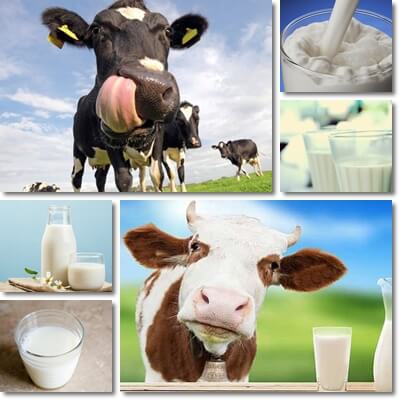If you frequently experience abdominal discomfort with bloating, cramps, flatulence, diarrhea, growling or rumbling stomach noises, even nausea and vomiting symptoms after drinking regular milk, then chances are you are lactose-intolerant. In simpler terminology, lactose intolerance means that you have a deficiency of the enzyme lactase in your smaller intestine. This enzyme is required to digest the sugar lactose from milk and other dairy, but insufficient production causes the infamous intolerance to lactose and prevents you from enjoying the health benefits of milk consumption.
Lactose intolerance can be acquired over the course of one’s lifetime if a person stops drinking milk or rarely eats other dairy or if the small intestine is damaged either by trauma or disease (for example, Celiac’s disease or Chron’s disease). Or it can be congenital, which is rare (genes dictate that less lactase is to be produced as a person grows older). Fortunately, low-lactose and lactose-free milk options exist to allow for everyone to enjoy the benefits of milk, irrespective of their degree of intolerance.

But what is the difference between regular milk and low-lactose and lactose-free milk?
In short, regular milk has a sugar called lactose. It is a naturally-occurring form and can only be digested if you produce the enzyme lactase in your small intestine. Low-lactose and lactose-free milk have the same amount of sugar, but just not in its original form. The enzyme lactase is added to the milk to break down the naturally-occurring lactose sugar in its simpler constituents – the sugars glucose and galactose. This allows for people who don’t produce enough lactase or any at all to essentially digest milk.
Lactose-intolerant individuals only have trouble digesting lactose, not glucose (found in fruits, vegetables and grains like sweet corn) or galactose (found in dairy, sugar beets and avocado, among other sources). As such, they can drink milk without experiencing intolerance symptoms if the milk has the lactose already broken down in its simpler constituents, or pre-digested.
Lactase, the enzyme needed for digesting the naturally-occurring sugar in milk, is extracted from molds and yeasts such as:
1) Aspergillus oryzae, the same mold used to ferment soybeans for soy sauce and rice for rice vinegar.
2) Aspergillus niger, a mold used in fermentation processes to obtain citric acid, used to give food citrus flavors and prolong its shelf life.
3) Kluyveromyces marxianus, a yeast.
4) Kluyveromyces lactis, a yeast also used for producing Chymosin, an enzyme in rennet for cheese making (helps the protein in milk and whey curdle to obtain a cheese-like consistency).

Further comparison of milk types based on lactose content:
1) Regular milk. It can be whole, reduced-fat or non-fat. Typically, low-fat milk options have more lactose than whole milk. If you find it hard to believe, think about butter which is all fat and has only 0.06 g of carbohydrates, all lactose, per 100 g. Lactose content varies significantly between types of milk as well. For example, whole cow’s milk has an average of 4.6% lactose and up to 5.4%, whole sheep milk between 5.1 and 5.36%, whole goat’s milk 4.4 to 5%.
2) Lactose-free milk. The enzyme lactase is added to milk to break down the naturally-occurring sugar lactose into its simpler constituents, glucose and galactose. As a result, the milk ends up containing sugar in the form of glucose and galactose. This eliminates the need for lactase production and allows anyone who is lactose-intolerant to enjoy dairy milk.
3) Low-lactose milk. This is an in-between option available especially for those that have milder forms of intolerance. It is likely they are producing the enzyme lactase, just not in sufficient amounts so they are better off drinking milk that has a reduced lactose content (preferably below 2%). If consumed in moderation, low-lactose milk is unlikely to trigger intolerance symptoms. Of course, there are various degrees of intolerance so it may take some time to find the right product for you and determine an intake that does not elicit side effects.
What does lactose-free milk taste like?
Sweeter than regular milk, actually. Lactose has a moderately sweet taste. Compared to other sugars, it is considered the least sweet. Glucose and galactose, on the other hand, are considerably sweeter than it, but not as sweet as fructose which is considered the sweetest sugar. On average, glucose is 4.6 to 5 times sweeter than lactose and galactose is almost as sweet as glucose. So naturally, lactose-free milk tastes sweeter.
Frequently asked questions:
1) Does almond milk contain lactose? No, it doesn’t. Almond milk is a plant-based product made from almonds. Lactose is a sugar found only in dairy, not in plant-based products.
2) Do soy and rice milk have lactose? No, they don’t. Soy or soybean is a plant, a legume, a bean essentially. Rice is a grain. The milk made from them is thus plant based so it can’t have lactose.
